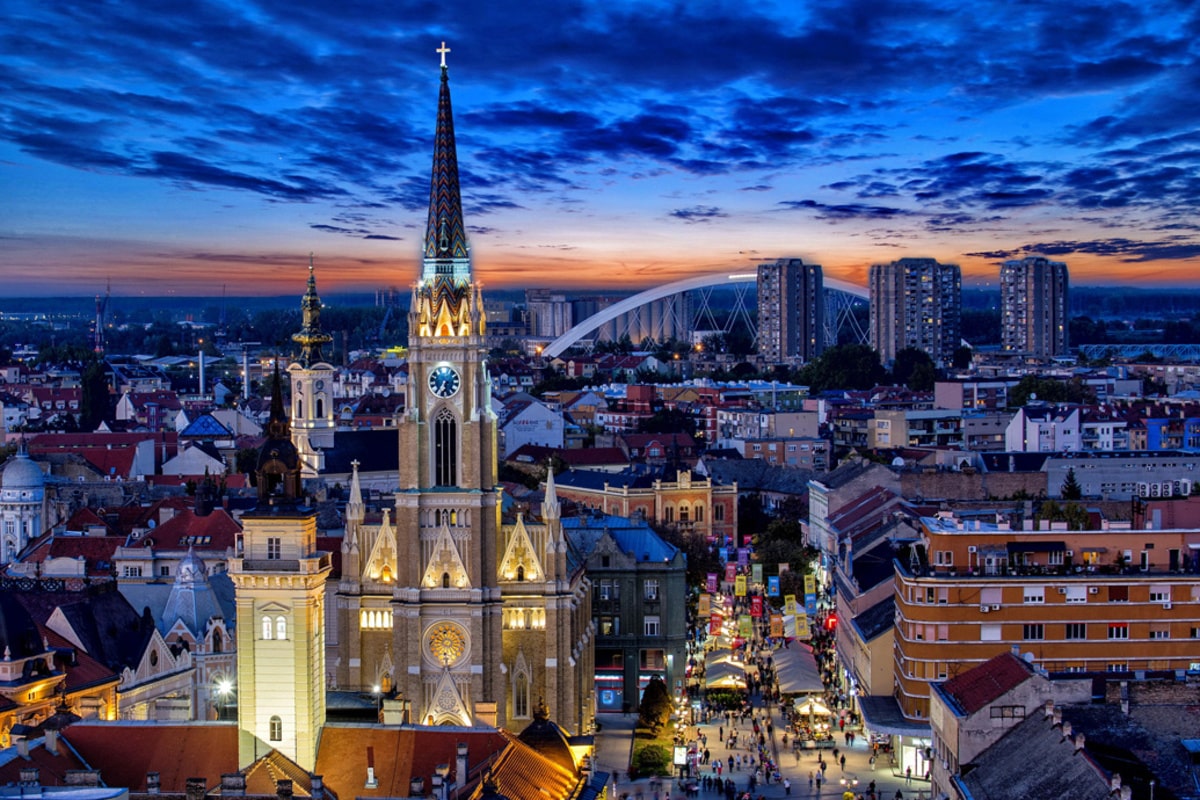Vojvodina is an autonomous region in northern Serbia known for its extraordinary cultural diversity, multiethnic society, and fascinating history. Although it may not be as famous as other European regions, it holds countless surprising and valuable cultural treasures. For centuries, various nations, languages, religions, and traditions have coexisted peacefully here, making Vojvodina one of the most colorful and harmonious places in the Balkans. In this article, you will discover captivating facts you might not have known about this unique region.
- Vojvodina is one of two autonomous provinces in Serbia and has its own parliament, government, and official symbols. Although it is part of the country, it enjoys significant cultural and linguistic autonomy. This makes it one of the most decentralized areas in the Balkans.
- The capital of Vojvodina is Novi Sad, Serbia’s second-largest city, often referred to as the cultural capital of the country. It hosts the EXIT music festival, one of the biggest events of its kind in Europe. In 2022, Novi Sad was named a European Capital of Culture.
- Vojvodina is the most ethnically diverse region in Serbia, home to more than 25 nationalities. Six languages are officially recognized, including Serbian, Hungarian, Slovak, Romanian, Rusyn, and Croatian. Many towns feature bilingual signs, and education is offered in several languages.
- The region has strong agricultural traditions thanks to its fertile plains and flat terrain. Vojvodina is Serbia’s main agricultural center, known for growing corn, wheat, sunflower, grapes, and vegetables. It is also famous for producing traditional foods like kajmak and homemade sausages.
- Historically, Vojvodina was part of the Austro-Hungarian Empire for centuries, which left a lasting influence on its architecture, customs, and administrative structures. Cities contain buildings in the styles of baroque, secession, and modernism. This heritage gives the region a distinct Central European character.
- Vojvodina is home to many castles, monasteries, and palaces, with highlights including Petrovaradin Fortress and the Krušedol Monastery. The fortress on the Danube River is nicknamed the “Gibraltar of the Danube” and is one of the largest in Europe. It offers breathtaking views and centuries of history.
- Geographically, Vojvodina is divided into three regions: Bačka, Banat, and Srem, each with its own cultural and natural characteristics. Banat borders Romania and reflects Carpathian influences, while Srem lies between the Danube and Sava rivers. Each sub-region preserves local dialects, culinary traditions, and folk customs.
- Cultural centers and national theaters operate actively throughout Vojvodina, with performances in different languages. Subotica has a Hungarian-language theater, while Kovil hosts a Slovak cultural center. These institutions help preserve the identity and heritage of ethnic minorities.
- Vojvodina has a long-standing winemaking tradition, with vineyards concentrated around towns like Inđija, Irig, Sremski Karlovci, and Fruška Gora. Local wines such as Bermet and Riesling are highly regarded and exported abroad. Wine festivals and fairs are held every year in the region.
- The region is a major transportation hub, with a developed road and rail network and access to the Danube River. International transport corridors connect Central Europe with the Balkans through Vojvodina. This strategic location attracts investments and logistic operations.
- Numerous nature parks and reserves are found in Vojvodina, including Fruška Gora National Park, known for its biodiversity, monasteries, and vineyards. It is a popular destination for hiking, eco-tourism, and religious pilgrimages. The park is home to rare plant and bird species.
- In Subotica, you can find one of the finest examples of Art Nouveau architecture in the Balkans — the Town Hall, built in Hungarian Secession style. The building is adorned with colorful mosaics, stained glass, and folk design elements. It has become a symbol of the region’s multiculturalism and tolerance.
- Thanks to its flat landscape, cycling is highly popular in Vojvodina and supported by quality infrastructure. International cycling routes, such as EuroVelo 6, pass through the region, connecting the Atlantic Ocean to the Black Sea. This makes Vojvodina attractive to tourists who enjoy active travel.
- For centuries, Vojvodina has been known for peaceful coexistence among various nationalities, languages, and religions. Orthodox churches, Catholic cathedrals, Protestant chapels, and mosques often stand on the same street. This unique phenomenon is seen as a model of cultural balance in the Balkans.
These amazing facts about Vojvodina show that it is a region full of historical depth, natural beauty, and ethnic harmony. You might not have known that so many cultures could peacefully thrive in one place. Vojvodina is a shining example of how diversity can be the foundation of unity and shared progress. It is a region worth discovering and appreciating in its full richness.





